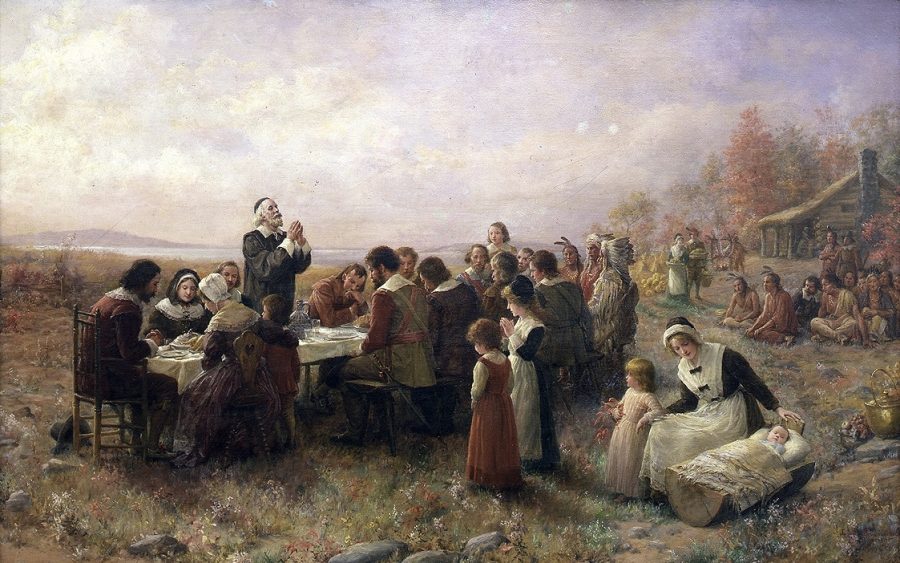The History of Thanksgiving: What You Know and Don’t Know
November 15, 2022
As I’m sure we’re all thankful for, next week we only have two days of school. I’m assuming you all know why this is, but for those who don’t, it’s Thanksgiving break! Time to stuff yourself with turkey and gravy (and plenty of pumpkin pie) and try to block the sounds of your younger cousins running around the house. Many people have different traditions when it comes to Thanksgiving, but the general idea is to get together with friends/family and eat a feast, all while enjoying each other’s company. However, there is an origin story for this well-known tradition; one point of view more popular than the other.
On November 11th, 1620, the Mayflower landed in is what now called Massachusetts Bay. The Pilgrims, as they are now referred to, started to create a village there, calling it Plymouth, a tribute to their hometown. Winter was rapidly approaching, however, and they had little time to finish the village with enough supplies to last the harsh conditions. They took shelter on the Mayflower and spent the long winter trying to survive on the supplies they brought from England.
Only around half of the original pilgrims survived that initial winter. When stepping off the boat when the much prayed for spring came, they were surprised to be greeted by a native. He was a member of the Abenaki tribe. He wanted to bring them someone. A couple days later, he came back to the pilgrims with a man named Squanto, who was a member of the Pawtuxet tribe. Squanto wanted to teach them how to survive in the new land. He taught them to cultivate corn, catch fish, avoid poisonous plants, and also helped them to form an alliance with the neighboring Wampanoag tribe.
In the following November of 1621, the pilgrim’s first corn harvest was successful and they were ecstatic. In order to celebrate, they planned to have a feast. Governor William Bradford made the plans, and invited the chief of the Wampanoag tribe, Massasoit, to come along with some of his men. The festival was said to last three, peaceful days.
However, the story I just told you is the kid-friendly, most commonly known story. For a while now, people have debated whether this is actually how things happened. There have been several gaps and controversies in the story of the First Thanksgiving.
Right when the Pilgrims landed in America, tensions with the native tribes there were extremely strained. The Pilgrims were said to rob the natives of their supplies and dig up their graves for objects buried with the deceased. Rightfully so, the natives were not happy with this and did not like the Pilgrims treading on their land.
After the First Thanksgiving, tensions between the two were still extremely strained, causing several more battles between neighboring tribes and the Pilgrims to happen, such as the Anglo-Pequot War in 1637.
Even though these two parts have to do with the timelines before and after the First Thanksgiving, there is still a controversy involving the communion of the two tribes in the first place: was the Wampanoag tribe actually invited? There is a theory that the men who came to the feast was actually a 90 men army who were coming to investigate after hearing the sounds of gunshots (which the pilgrims did set off). Only then did the governor ‘invite’ them, as a hope the army would not attack them.
Almost always in history, there are two sides to every story; one told to cover up the reality of the second story. Whether or not all the details of both sides of the stories are true or not is up to you and history itself. Many Native Americans today chose to remember Thanksgiving as a time of mourning rather than a celebration.
No matter which story truly happened, many people today gather to give thanks for their friends and family around them. I know I am going to be watching one of the best things to come out of the holiday: A Charlie Brown Thanksgiving.



